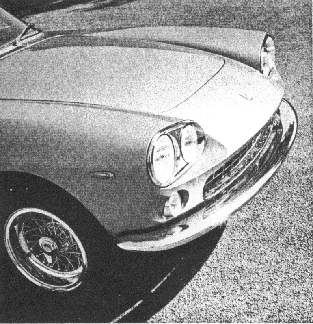 |
330 GT Registry |
 |
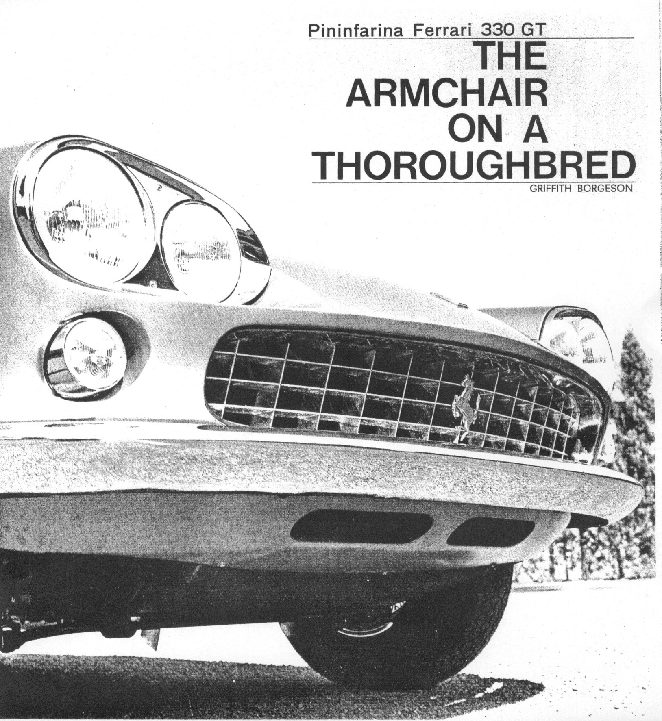
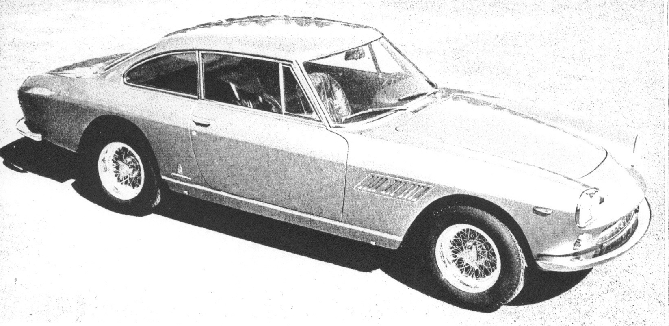
With his unfailing sense of showmanship Commendator Enzo Ferrari chose his annual conference for the international motoring press in January of 1964 for the debut of his new 330 Gran Turismo 2+2. The car was the most controversial Ferrari to date and its assembled judges were the cost intelligently critical in Europe. Each of these almost two hundred sophisticated journalists could not help but react strongly to a body configuration that represented a sharp break with Maranello tradition. Each felt the need to ask himself if this was a valid Ferrari.
This question and its answer are crucially important because the machines of Maranello symbolise - not just for Italy but for the entire world - the absolute ultimate in mechanical excellence, with overwhelming emphasis on performance. No one, anywhere, questions the perfection of the Ferrari chassis, but everyone, everywhere, expects its package to reflect and project a vivid image of the battle-charger (cavallo di battaglia) that it clothes.
The question and its answer also are crucially important because Ferrari is, overwhelmingly and without qualification, the greatest defender, standard-bearer and champion that the Italian automotive industry has in the eyes of the whole, broad world. Even Ferrari s enemies - and he has gathered a few in his long, hard-fought career - are well aware of what is at stake when a new model is born at Maranello. If only subconsciously, anyone with a stake in Italy’s future must ask himself if the new product is worthy of the emblem of the CAVALLINO RAMPANTE.
There were strong and diverse reactions to the 330 2+2 on that snowy day when the newest ambassador of Italian industry was unveiled. But whatever the response - and it definitely was mixed - it tended to miss the point by regarding the new machine as a thing in itself rather than as a milestone of an evolutionary trail. To be evaluated realistically the 330 GT 2+2 must be seen as a step in the taming of tile wild Maranello stallion. It must be seen as the boldest step in Ferrari’s quite-new industrial phase of development. It cannot be evaluated in terms of few-of a-kind sports cars.
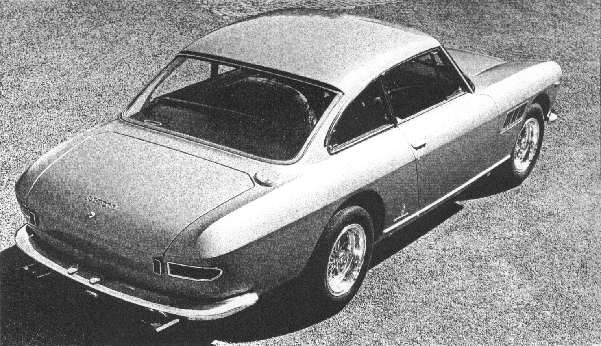
|
The dihedral profile which, on the same line, divides the rear and side panels in two surfaces, is the «leitmotiv» of the car. The front end, on a lower line, is also characterized by a swage line. The reflection of light on these surfaces lightens the appearance of the car. |
Ferrari’s industrial period began in less and coincided with an accord between his firm and Carrozzeria Pininfarina. The first result of this collaboration was what has been called the first really civilized Ferrari, the 250 CT Coupé. One thousand of these cars were made and such unheard of - for Ferrari - volume brought many benefits, including reduced costs, interchangeability and easy replacement of body parts, and a standard model which could be advertised and marketed throughout the world.
This first foray by Ferrari into real series production was conservative in every way, including body design. The wildly hairy look of many earlier Ferraris was studiously avoided by Pininfarina in favor of chic, crisp lines which were reminiscent of the two-place Ford Thunderbird and were likely to have a very broad appeal on the all-important American market. From the body-engineering standpoint there were no technical innovations; like all Ferraris up to that point, it was another two-passenger car. But unlike most Ferraris up to that point the 250 GT Coupé was refined and luxurious in every detail, as one of the world’s most costly cars should be.
Performance-minded purists were quick to condemn this car as evidence of Ferrari’s decadence and, in spite of its magnificent, thoroughbred chassis, said that it never would sell. Instead, it was a complete success and it firmly launched Ferrari as a great new force in the automobile manufacturing world.
It should be noted here that in the arrangement between the two houses, Ferrari is responsible only for chassis design and construction. In practically all matters pertaining to body design and construction the judgment of Carrozzeria Pininfarina is final.
|
|
|
The front end continues the Ferrari tradition, despite the introduction of twin headlamps |
This purely industrial turning point in Ferrari evolution was followed by one which was essentially technical. It came in 1960 in response to a very real market demand, that for a four-passenger gran turismo car.
The solution of this problem was infinitely more difficult than casual thought suggests and an inadequate solution could have brought considerable ruin to both firms. Ferrari had the problem of sacrificing a minimum of speed and acceleration in the larger car. Much more challenging, he had the problem of maintaining the excellent readability of the two-passenger car in a four-passenger model, and of maintaining this in spite of the variations in passenger load and center of gravity that are inevitable with a ear which must perform both with and without rear-seat occupants. Pininfarina had the problem of providing habitable interior dimensions for four occupants while maintaining the small exterior dimensions that are essential to high performance and to the sporting look. Also, of course, these dimensions had to be blended with a form that was simultaneously suggestive of elegance and great harnessed power: the Ferrari image.
Both Ferrari and Pininfarina approached these challenges with genuine trepidation but the resulting 250 GT 2+2 was a sweeping success in every way. Ferrari’s chassis improvements were such that, carrying occupants in the front seats only, the new car’s handling was even better than that of the Coupé. With a full load of four passengers it was almost as good, even though a car with such a burden is not likely to be driven at the upper limits of its performance. The basic styling theme, with which Pininfarina had fixed the then-valid Ferrari look on the Coupé, was carried over, intact, to the larger body, with only the addition of a sculptured horizontal line to add fleetness to the form and texture to the smooth sides of the larger vehicle.
The third turning point in Ferrari’s evolution as a volume manufacturer has its monument in the 330 GT 2+2. This time the jump, mutation or revolution was neither industrial nor technical hut instead was one of refinement. The two previous successes had pointed the way, had proved that the market for Ferrari gran turismo cars grew in proportion to their comfort, luxury and elegance. Their superlative performance of course was the foundation of their greatness and was taken for granted.
Ferrari made important contributions to comfort and luxury by increasing his chassis’ wheelbase by five centimeters and by important reductions in noise level throughout the power train. The extra five centimeters enabled Pininfarina to achieve a far more comfortable and luxurious interior within the same overall width and length. There is perhaps not one detail of the 330 GT 2+2 body which has not been refined and improved. The door handles, inside and out, are flush with the adjacent structure. There are no transverse top stiffeners to bump ones head against. The fresh air blowers and windshield wiper motor were moved into the engine compartment and sound insulation was greatly improved. Each passenger has what amounts to a personal air conditioning system. The inventory of improvements is tremendous and adds up to a combination of performance with luxury that is unique in the world, And then there is the factor of elegance, which translates as style.
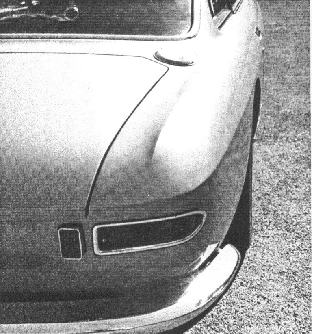 |
|
The tail, in harmony with the front, is distinguished by the elegance and logic of the union between the end of the side panel and the bonnet. |
The 330’s greenhouse (the Americanism for all the structure above the bonnet line) is closely similar to that of the 250 GT 2+2 but otherwise its body is entirely different. The angular, masculine lines of the previous series-built Ferraris have given way to rounded, feminine lines which are a sharp break with the traditions of the marque. The car is clearly recognisable as a Ferrari only from the front, where the characteristic grille configurations has been retained. But the frontal aspect also has been radically altered by the adoption of dual headlights, a real hallmark of Detroit practice. It is around these, the soft, rounded lines and the lack of traditional Ferrari look that controversy has raged ever since the unveiling of the 330 GT 2+2.
Whatever regional prejudices may be concerning the duplication of headlights there is now question about their functional justification on this car. The vehicle is capable of a good 240 kHz and at velocities approaching this, at night, its superb high-beam lights are not merely desirable, they are necessary.
As for the overall form and feeling of the 330 GT 2+2, it obviously is not that of the screaming, thundering victors of a thousand great road races. It is, instead, Ferrari’s bid for wider admission to refined society and for the approval, not only of wealthy gentlemen of sporting tastes, but of their wives and friends, who also will ride in the car. Customers who hunger for more savage transportation have other Ferrari models to choose from.
When you argue with Pininfarina you are arguing with success, which generally is a losing battle. Scaglietti, who builds the bodies for the racing Ferraris, puts it this way:
‘We all panic at every new Pininfarina design, convinced that the public never will accept it. A few months later we find out that we were wrong again. Pininfarina has an uncanny sense for being right about what the public wants, which has a lot to do with where he is today. Certainly he’s given the Ferrari a new look. You can be pretty sure that it’s just what the right people want”.
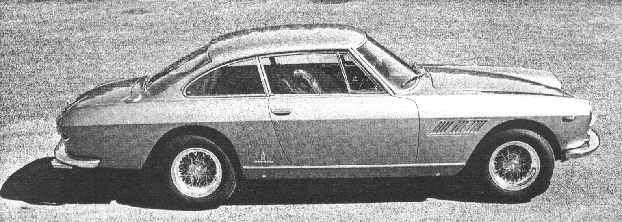
Style Auto no. 4, Autumn 1964
Reproduced with permission granted in the magazine by Style Auto Editrice, Corso Rosselli 91, Torino, Italy.
